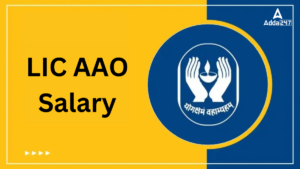Q1. India’s total foreign exchange (Forex) reserves stand at around US$453 billion as on 06 December 2019. The Foreign exchange of India is kept with _________
(a) SBI
(b) ECGC
(c) RBI
(d) NABARD
(e) Finance Ministry
Q2. Which of the following instruments is not a Negotiable Instrument, as per NI Act, 1881?
(a) Bills of Exchange
(b) Letter of credit
(c) Bank Draft
(d) Promissory Notes
(e) Cheque
Q3. Deposits under Foreign Currency Non-Resident (FCNR) scheme can be accepted for a minimum of _______
(a) 15 days
(b) 3 months
(c) 6 months
(d) 1 year
(e) 10 years
Q4. One of the State Government avails of a temporary financial assistance from Reserve Bank of India. This type of finance is called _______?
(a) Overdraft
(b) Temporary loan
(c) Short term finance
(d) Ways and Means advance
(e) None of the given options is true
Q5. Which of the following forms of securing a loan is the safest one?
(a) Lien
(b) Assignment
(c) Pledge
(d) Hypothecation
(e) Mortgage
Q6. When banks accept a fixed sum of money from an individual for a definite term and pay on maturity with interest, the deposit is known as-?
(a) demand deposit
(b) term deposit
(c) bond
(d) mortgage
(e) advance
Q7. Which of the following public sector banks has celebrated it centenary year in 1965?
(a) Central Bank of India
(b) Allahabad Bank
(c) State Bank of India
(d) Bank of Maharashtra
(e) Bank of Baroda
Q8. The primary function of a central co-operative bank is-?
(a) to channelize the flow of funds from the State cooperative banks
(b) mobilize the resources in the district for financing its members to the maximum extent possible
(c) funds of the bank consist of share capital, deposits, loans and overdrafts from state co-operative banks and joint stocks.
(d) All of the above
(d) None of the given options is true
Q9. Which of the following Bank in 2012 has celebrated its 30th year of continuous service?
(a) RBI
(b) SIDBI
(c) Central Bank of India
(d) NABARD
(e) SBI
Q10. Which of the following organizations/agencies works solely to monitor and arrange flow of agriculture credit in India?
(a) NABARD
(b) SIDBI
(c) RBI
(d) SEBI
(e) IRDAI
Q11. The RBI has decided to stop circulation of the coin of which of the following denominations from June 2011?
(a) 50 paise
(b) Rs 1
(c) Rs 2
(d) 25 paise
(e) Rs. 5
Q12. Insurance companies in India are regulated by-?
(a) RBI
(b) AMFI
(c) SEBI
(d) IRDAI
(e) NABARD
Q13. Department of Economic Affairs is part of which of the following Ministry?
(a) Ministry of Home Affairs
(b) Ministry of Planning
(c) Ministry of Finance
(d) Ministry of Heavy Industries & Public Enterprises
(e) Ministry of Rural Development
Q14. The currency notes of which of the following denominations are not printed in India?
(a) Rs 5
(b) Rs 10
(c) Rs 50
(d) Rs 1,000
(e) Rs 2,500
Q15. Union Budget which is presented every year in the parliament is also known as-?
(a) Government Budget
(b) Common Budget
(c) General Budget
(d) Finance Report of the year
(e) Statement of Allocation of funds
Solutions
S1. Ans.(c)
Sol. India’s total foreign exchange (Forex) reserves stand at around US$453 billion as on 06 December 2019. The Foreign exchange of India is kept with RBI.
S2. Ans.(b)
Sol. A letter of credit is a document that guarantees the buyer’s payment to the sellers.
S3. Ans.(d)
Sol. The Foreign Currency Non-Resident (FCNR) scheme was introduced with effect from May 15, 1993 to replace the then prevailing FCNR scheme introduced in 1975. The minimum maturity period of the deposit under the FCNR scheme, which was initially six months, was raised to one year, effective October, 1999. From July 26, 2005, banks were allowed to accept FCNR deposits up to a maximum maturity period of five years, against the earlier maximum limit of three years.
S4. Ans.(d)
Sol. The Reserve Bank of India gives temporary loan facilities to the centre and state governments as a banker to government. This temporary loan facility is called Ways and Means Advances (WMA).
S5. Ans.(c)
Sol. A pledged asset is a valuable possession that is transferred to a lender to secure a debt or loan. A pledged asset is collateral held by a lender in return for lending funds.
S6. Ans.(b)
Sol. A term deposit is a cash investment held at a financial institution. Your money is invested for an agreed rate of interest over a fixed amount of time, or term.
S7. Ans.(b)
Sol. On 24th 1865, Allahabad Bank was founded at the confluence city of Allahabad by a group of Europeans.
S8. Ans.(d)
Sol. All of the above options is primary function of a central co-operative bank.
S9. Ans.(d)
Sol. NABARD came into existence on 12 July 1982 by transferring the agricultural credit functions of RBI and refinance functions of the then Agricultural Refinance and Development Corporation (ARDC). It was dedicated to the service of the nation by the late Prime Minister Smt. Indira Gandhi on 05 November 1982. Set up with an initial capital of Rs.100 crore, its’ paid up capital stood at Rs.10,580 crore as on 31 March 2018. Consequent to the revision in the composition of share capital between Government of India and RBI, NABARD today is fully owned by Government of India.
S10. Ans.(a)
Sol. The importance of institutional credit in boosting rural economy has been clear to the Government of India right from its early stages of planning. Therefore, the Reserve Bank of India (RBI) at the insistence of the Government of India, constituted a Committee to Review the Arrangements For Institutional Credit for Agriculture and Rural Development (CRAFICARD) to look into these very critical aspects. The Committee was formed on 30 March 1979, under the Chairmanship of Shri B. Sivaraman, former member of Planning Commission, Government of India. The Committee’s interim report, submitted on 28 November 1979, outlined the need for a new organisational device for providing undivided attention, forceful direction and pointed focus to credit related issues linked with rural development. Its recommendation was formation of a unique development financial institution which would address these aspirations and formation of National Bank for Agriculture and Rural Development (NABARD) was approved by the Parliament through Act 61 of 1981.
S11. Ans.(d)
Sol. Coins up to 50 paise are called ‘small coins’ and coins of Rupee one and above are called ‘Rupee Coins’. Coins in the denomination of 1 paise, 2 paise, 3 paise, 5 paise, 10 paise, 20 paise and 25 paise have been withdrawn from circulation with effect from June 30, 2011 and are, therefore, no more legal tender.
S12. Ans.(d)
Sol. Insurance Regulatory and Development Authority (IRDA) set up as autonomous body under the IRDA Act, 1999. Insurance Regulatory and Development Authority of India is regulating and promoting the insurance and re-insurance industries in India.
S13. Ans.(c)
Sol. The Department of Economic Affairs, Ministry of Finance, is responsible for advice on economic issues having a bearing on internal and external aspects of the Indian economy including inflation, price control, foreign exchange management, Official Development Assistance domestic finance and preparation of the Union Budget, bilateral and multilateral engagement with international financial institutions and other countries.
S14. Ans.(e)
Sol. currency notes of RS 2, 500 denominations are not printed in India.
S15. Ans.(c)
Sol. Union Budget which is presented every year in the parliament is also known as general budget.
You may also like to read:
Upcoming and Latest Govt Jobs in 2020: Check the complete details here:
Register here to get study materials and regular updates!!
All the Best BA’ians for IBPS Clerk Mains 2019!



 GA Capsule for SBI Clerk Mains 2025, Dow...
GA Capsule for SBI Clerk Mains 2025, Dow...
 The Hindu Review October 2022: Download ...
The Hindu Review October 2022: Download ...
 LIC AAO Salary 2025, Revised Structure, ...
LIC AAO Salary 2025, Revised Structure, ...





